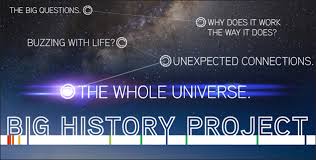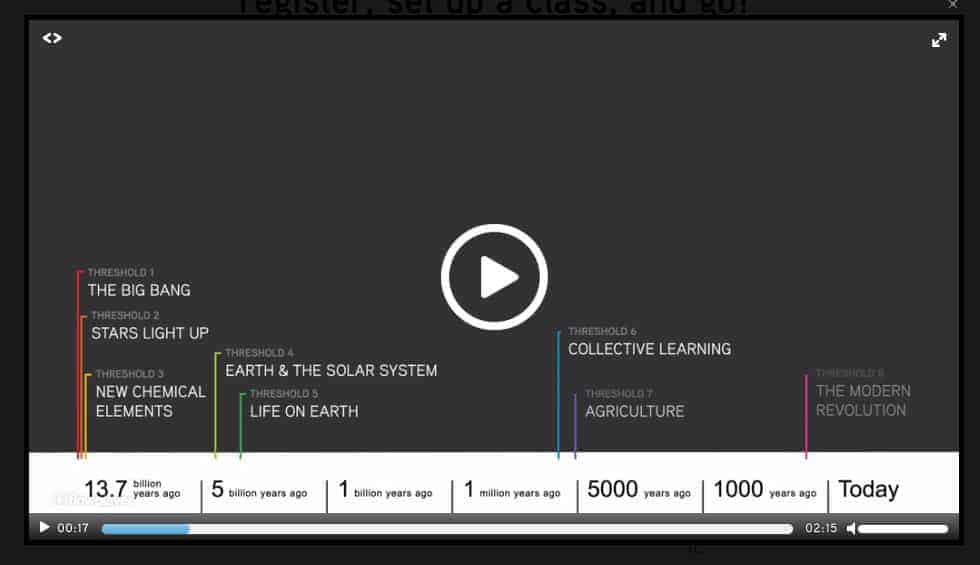 Just today I stumbled upon Big History Project, an online course geared toward high schoolers that–get this–takes students on a tour of 13.7 billion years of history in ten units. Bill Gates is providing ongoing support for the project, which at this point is accessible only to educators, but is being geared up for free public access in September.
Just today I stumbled upon Big History Project, an online course geared toward high schoolers that–get this–takes students on a tour of 13.7 billion years of history in ten units. Bill Gates is providing ongoing support for the project, which at this point is accessible only to educators, but is being geared up for free public access in September.
I watched the promo videos and I am so looking forward to watching this.
The way they pull it off and keep the attention of 15 year olds, besides great visuals, is by focusing on 8 “thresholds of increasing complexity,” i.e., 8 “dramatic transitions” where the right ingredients and the right conditions led to new levels of complexity. The lessons, naturally, will engage science, archaeology, anthropology.
The thresholds are (and pardon the squishy screenshot):
Having a sense of the whole so you can focus on the particulars is, as far as I’m concerned, a great way to teach history to young people. It’s how I approach teaching my puny area of history–about 4,000-2,000 years ago in ancient Palestine, the biblical period–to college students: use key moments as narrative signposts and let the details center on those moment. Seeing the entire history of, well, history presented in terms of the “big moments” in bite-sized chunks is exciting.
The time scales, of course, are unfathomable. Talk about giving you perspective on your own life….as well as your faith in God. Personally, I find all this pretty exciting to think about.

